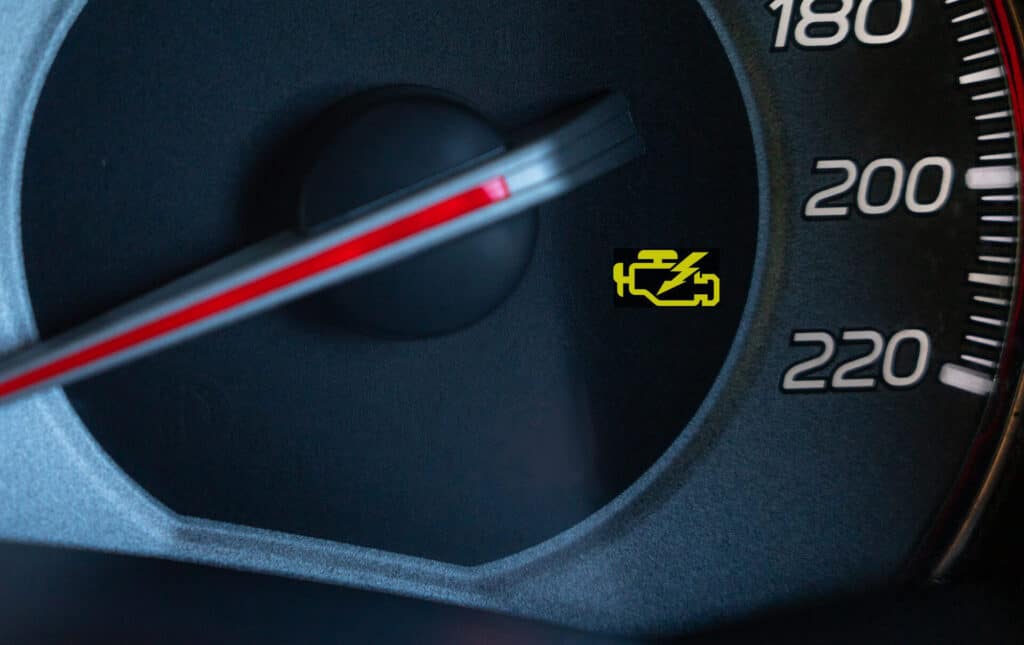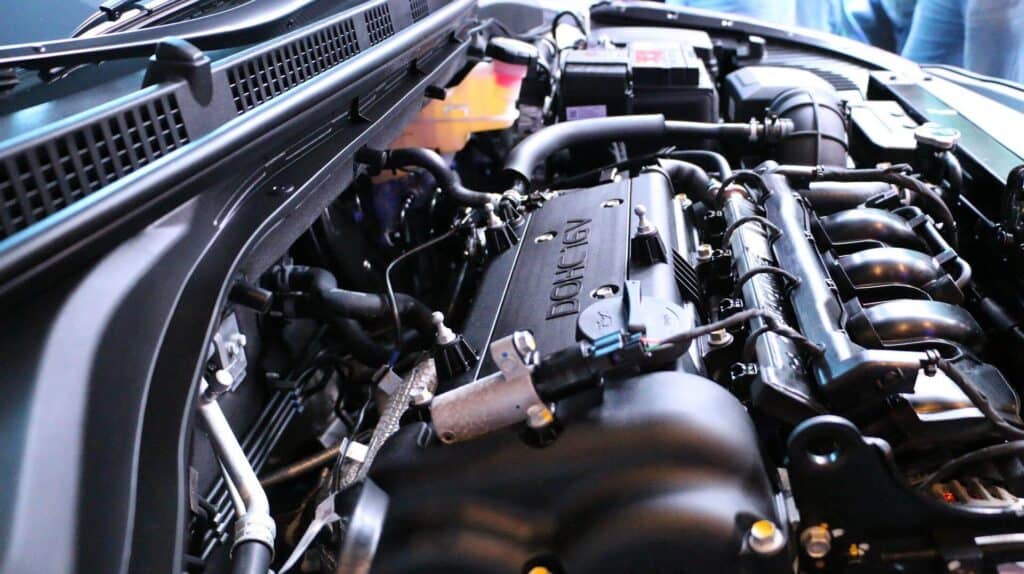The Heartbeat Monitor of Your Car – Understanding the Engine Management Light
Engines, much like our heart, are the core of our vehicles. They pulsate, pump, and keep everything moving. Enter the Engine Management Light (EML) – akin to a doctor’s stethoscope. This indispensable tool listens intently to the engine’s rhythm, identifying any irregularities or potential concerns, thus ensuring the health and vitality of your car.
Deciphering the Light: From Glowing Hues to Critical Clues
The Engine Management Light is a valuable tool in understanding your vehicle’s health. By paying attention to its signals and nuances, you ensure a longer and smoother ride for your vehicle.
• Nature of the Alert: The EML serves as a bridge of communication between your vehicle’s intricate systems and you, acting as a translator for potential engine issues.
• A Spectrum of Signals: The light’s hue can vary, but the most common shade is yellow or amber. This color isn’t arbitrary; it’s specifically chosen to draw your attention without causing immediate alarm, as a red light might.
• Message Behind the Glow: When the EML is illuminated, it’s the car’s way of saying, “Hey, let’s check this out.” While often indicative of minor hiccups, such as a loose fuel cap or minor sensor discrepancies, it’s crucial to understand that the light can also signify deeper concerns.
• Gradations of Urgency: A steady EML suggests there’s a potential issue, but it might not be an immediate emergency. On the flip side, a flashing EML demands prompt attention, signaling a more serious problem that could be harmful to the engine or the vehicle’s emission system.
• Interpreting the Intensity: A dimly lit EML might be easier to ignore, but its luminance doesn’t necessarily correlate to the severity of the issue. Even a faintly glowing light deserves attention.
• Reading Beyond the Light: The EML, while informative, is just the tip of the diagnostic iceberg. To truly decipher its message, a diagnostic tool or professional assessment is often needed. This helps pinpoint the exact cause and recommend the appropriate course of action.

The Green Signal? Addressing the Debate on Driving with an Illuminated EML
It’s a scene that’s played out for countless drivers: cruising down the road, music playing, the sun setting, and then—bam! The Engine Management Light (EML) pops up, instantly casting a shadow over the journey. A flood of questions ensues: “Should I pull over now? Can I make it home? Is it risky?” For many, the primary concern is whether it’s safe to continue driving with that pesky EML staring back at them.
In several instances, especially when the EML is steady and not flashing, it might be permissible to drive for a limited distance. Perhaps you’re a few kilometers away from home, or there’s a nearby service station where you can get some assistance. In such situations, you might be alright to proceed with caution, always keeping a vigilant eye on any changes in the car’s behavior. But remember, this isn’t a universal green signal to carry on with extended journeys. Prolonged driving with an active EML could turn a minor issue into a major ordeal, possibly leading to further damage or even compromising safety.
The EML exists to communicate potential problems, and ignoring it is akin to dismissing a cry for help. Thus, the wisest and most responsible approach is to seek expert intervention promptly. It’s not just about preserving the health of your vehicle, but ensuring the safety of its occupants and others on the road. When in doubt, always err on the side of caution.
Ghosts in the Machine: Can the Engine Light Clear Itself?
Have you ever noticed your Engine Management Light (EML) flicker on and then mysteriously disappear before you even had a chance to react? These automotive apparitions can sometimes make drivers second-guess their own observations. The phenomenon, while perplexing, often arises from transient issues—temporary glitches or problems that may have corrected themselves. This can range from a loose fuel cap, which once tightened no longer poses a problem, to minor sensor inconsistencies that regulate after a couple of drives.
However, just because the ghostly glow of the EML has vanished doesn’t mean your vehicle is free from concerns. Think of it as a temporary reprieve rather than a complete resolution. There’s always a possibility that this spectral signal could reappear, especially if the underlying issue hasn’t been genuinely resolved. So, even if the light fades, it’s wise to remain vigilant. Monitoring your car’s behavior and perhaps even consulting with a mechanic to ensure there isn’t a more deep-rooted issue lurking is vital. After all, some phantoms have a habit of returning.
Reset and Rally: Steps to Clear the Engine Management Light
Feeling hands-on? To reset the EML:
• Safety First: Before diving into the reset process, ensure the vehicle is in a safe location, ignition is turned off, and keys removed.
• Gather the Essentials: You will need gloves (to protect your hands from any battery acid) and a wrench.
• Locate the Battery: Open the car’s hood and locate the battery, typically marked by a + and – sign.
• Disconnecting: Start by loosening the negative (black or – sign) terminal. Once done, proceed to the positive (red or + sign) terminal.
• Wait it Out: Leave the battery disconnected for about 15 minutes.
• Reconnection: Reconnect the positive terminal first, followed by the negative.
• Ignition On: Start the vehicle and observe if the EML is off.
• Crucial Reminder: While this might clear the light, it’s not a guaranteed fix. The light could return if the underlying issue isn’t resolved. Always consult a mechanic for a comprehensive check.
Digging Deeper: Common Culprits Behind the Glowing EML
• Spark Plugs: These little components can misfire, affecting the engine’s performance and causing the EML to illuminate.
• Fuel Cap: A loose or damaged fuel cap can lead to fuel vapor leaks, triggering the light.
• Oxygen Sensor: This device measures the amount of unburned oxygen in the exhaust, helping to manage the fuel mixture. A malfunction can reduce fuel efficiency.
• Catalytic Converters: Essential for converting harmful carbon monoxide into carbon dioxide, a faulty converter can cause damage to the engine and decrease fuel efficiency.
• Mass Airflow Sensor: This monitors the amount of air entering the engine. A defect can harm the spark plugs, catalytic converter, or the oxygen sensor.
• Transmission Issues: Any problems with the car’s transmission can also light up the EML.

A Dent in the Wallet? Cost Implications and Repair Breakdown for EML Issues
The sight of the EML illuminating can often induce a state of dread, not just for potential vehicular issues, but for the impending financial hit. Let’s demystify that. Yes, certain EML-triggered concerns can be resolved with just a minor touch. For instance, tightening a loose fuel cap or replacing a faulty spark plug can often be done without burning a hole in your pocket. These are relatively simple solutions, with minimal cost implications, often leaning on the cheaper side of the repair spectrum.
On the flip side, not all EML alerts come with such economic grace. More significant concerns, especially those stemming from complex electrical components or intricate engine parts, can certainly be pricier. This might involve sophisticated diagnostic tools, specialized replacement parts, and more extensive labor hours. However, there’s a silver lining: being proactive. Addressing EML concerns at their nascent stage, when the issues are relatively minor, can save you from more substantial, more expensive problems down the road. After all, a stitch in time saves nine, and in the automotive world, that stitch might just save you a decent chunk of change.
The Waiting Game: Understanding the Reset Timeline for the EML
• Immediate Reset: For minor issues, once addressed, the EML can reset nearly instantly, requiring no additional action.
• Drive Cycles: Some fixes necessitate multiple drive cycles – driving the car under different conditions – for the EML to reset. This typically takes about three cycles.
• Manual Intervention: In certain cases, especially after significant repairs, a mechanic might need to reset the EML manually using specialized equipment.
• Recurrence: If the root problem hasn’t been fixed entirely, the EML might return after some time, even after a reset. Regular monitoring and addressing any recurring alerts promptly is essential.
Navigating the Road Ahead with a Vigilant Eye on Your EML
As you tread the vast highways and winding lanes, remember that the EML is your engine’s voice. It sings tales of its health, joys, and sometimes its little ailments. Proactive maintenance, routine check-ups, and prompt response to its calls can ensure that your engine’s song remains harmonious. And when in doubt, always turn to the experts. For those in Canada, Uchanics mobile mechanic services are but a call away, ensuring your vehicle remains in optimal health.
